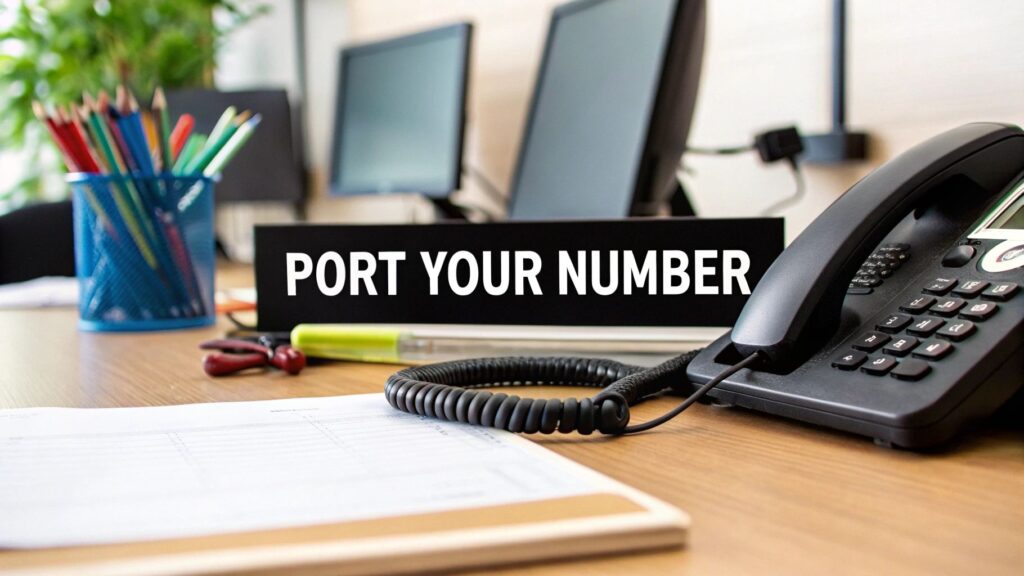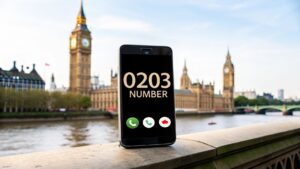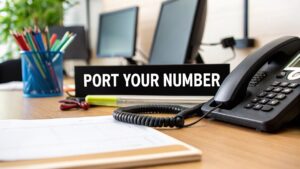Thinking about switching your business phone provider but worried you'll lose the number your customers have known for years? It's a common and completely valid concern. The good news is, you don't have to.
In the UK, it's your regulated right to take your existing number with you to a new provider. This process is called "porting," and it's the key to making sure your business doesn't skip a beat while you upgrade your phone system.
Worried About Losing Your Business Number? It’s Simpler Than You Think
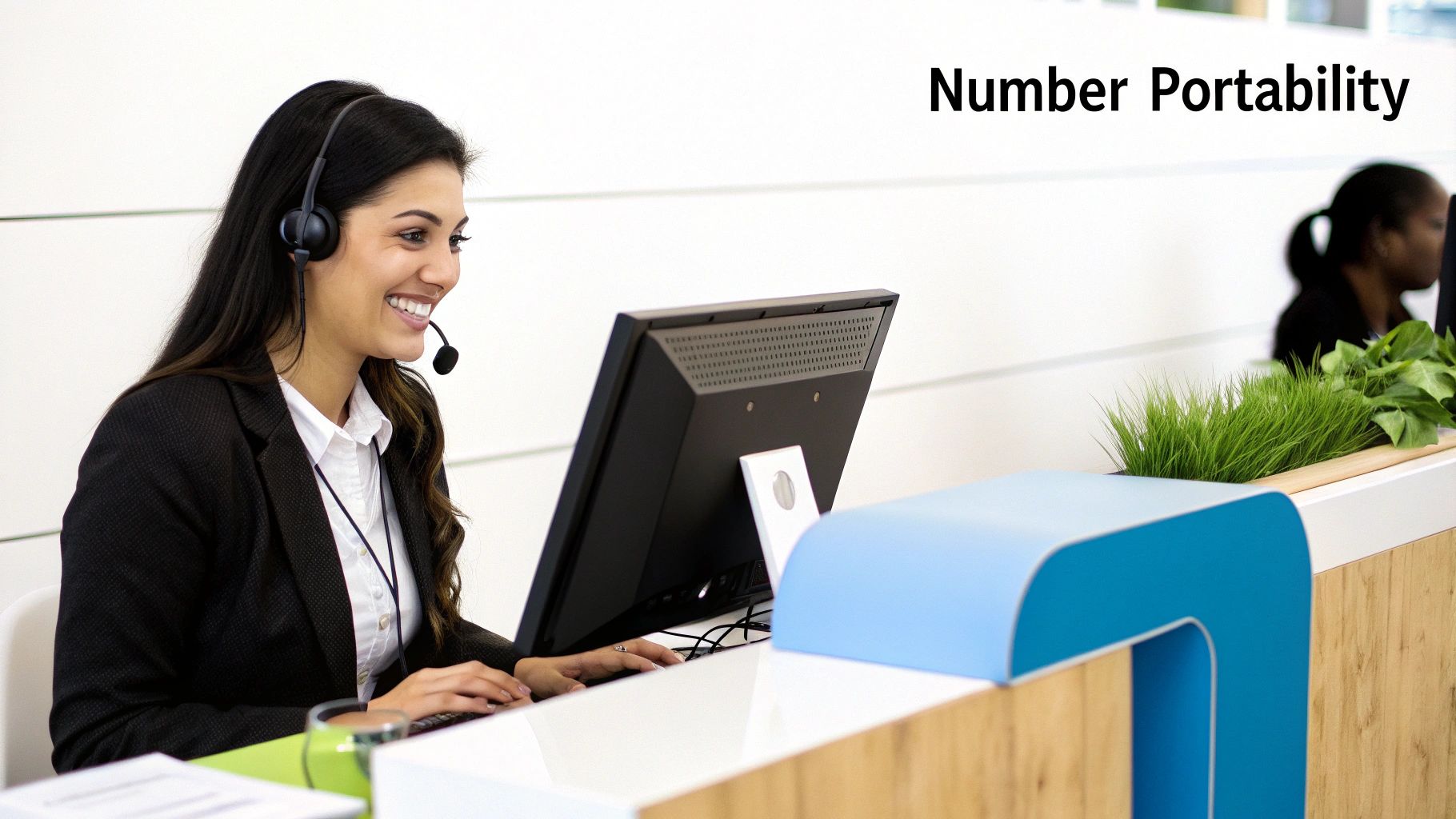
The idea of moving your business number can feel a bit daunting. We get it. But the reality is that the process to port a telephone number is usually quite smooth. Think of it like moving your business to a new, better office but keeping the same, reliable mailing address. Your location changes, but your customers can still find you without any fuss.
This is more relevant now than ever. The UK is in the middle of a major shift, moving away from old-school copper landlines to modern, internet-based phone systems (VoIP). The big "switch-off" for the old network was pushed from 2025 to early 2027, giving businesses more breathing room to get sorted.
Porting your number to a VoIP provider like us is the perfect way to make this transition. You hold onto the number everyone knows while tapping into a more flexible and often more cost-effective phone system. If you want to dive deeper into the technical side, there are some great resources that explain the shift to VoIP in detail.
Why Bother Porting? The Real-World Benefits
Opting to port your number isn't just about convenience; it's a strategic move that protects your business.
- You Keep Your Brand Intact: Your phone number is often as recognisable as your company name. Keeping it prevents customer confusion and reinforces your established brand identity.
- Zero Disruption to Your Business: Forget the headache of updating your website, Google Business Profile, business cards, and every other place your number is listed. It's business as usual from day one.
- Unlock Better Technology: Porting is your ticket to a more advanced phone system. By moving your number to us at Business Numbers Direct, you get access to powerful features that just aren't possible with a traditional phone line.
Your Pre-Porting Checklist for a Smooth Transfer
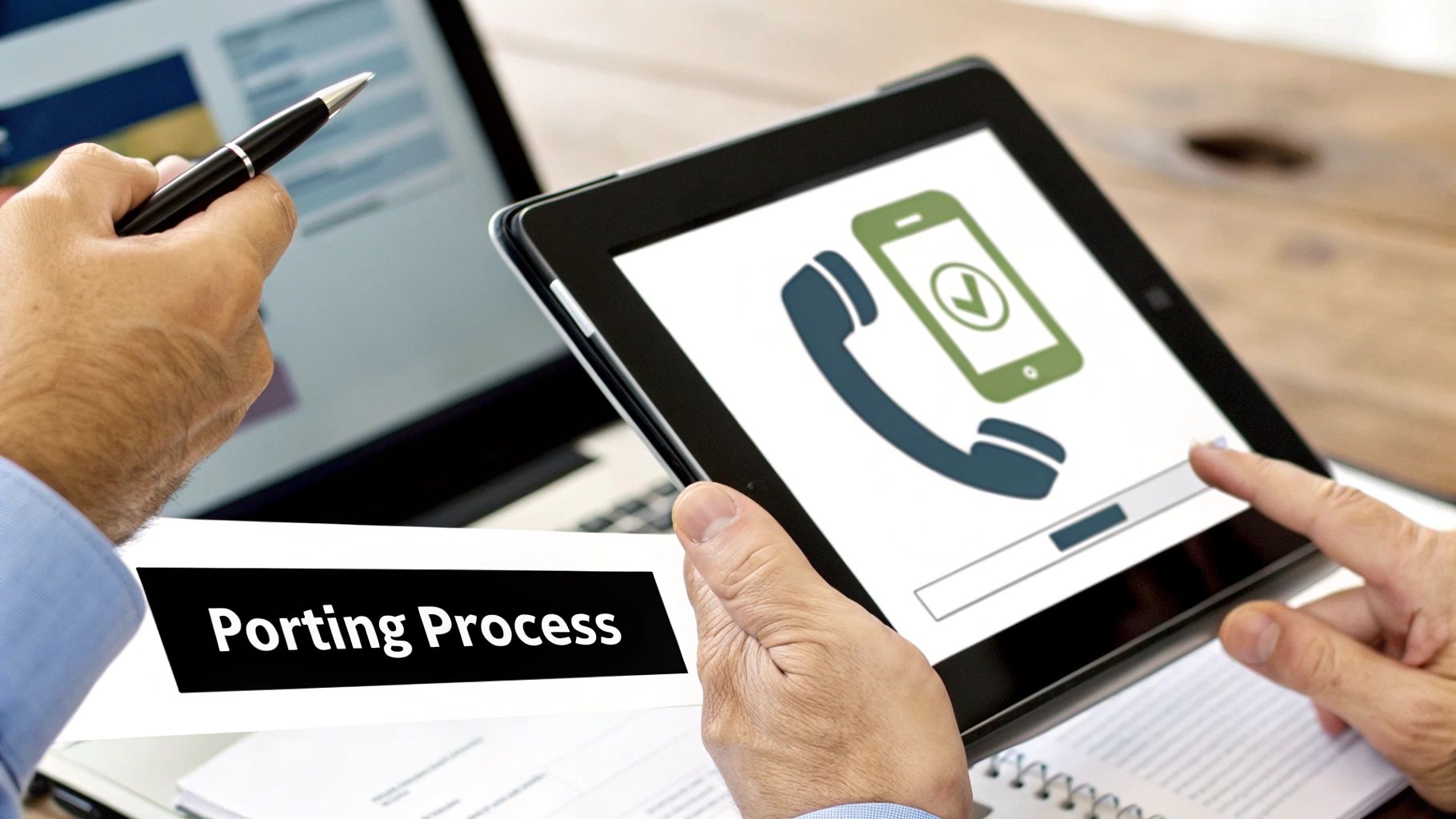
Before you kick off the process to port a telephone number, a bit of prep work can make all the difference. Think of it like getting your paperwork in order before a big meeting—it ensures everything runs without a hitch. The most common reason for a porting request to be delayed or rejected is a simple mismatch of information.
The best place to start? Grab a copy of your most recent phone bill from your current provider. This single document, sometimes called a Customer Service Record (CSR), holds nearly all the details you'll need.
Essential Information to Gather
This is your pre-flight check. Getting these details spot-on is the secret to avoiding frustrating rejections and getting your number moved over quickly.
- Your Account Number: Make sure you have the exact account number associated with your service.
- The Registered Name: This has to match what's on the bill perfectly. If it's a business account, use the full registered company name, not a trading name.
- The Service Address: Use the precise address your current provider has on file, right down to the postcode. A tiny typo here is often enough to derail the whole process.
Don’t rely on memory for this part. The details you provide must be a 100% perfect match to what your current provider has on their system. Precision is absolutely key.
Check for Common Roadblocks
A quick call to your current provider can also help you sidestep a few common hurdles that often catch people out.
- Is the number part of a bundle? Many phone lines are bundled with broadband. You'll need to ask your provider how to handle the port without accidentally cancelling your internet service. They'll have a process for this.
- Is there an outstanding balance? Make sure your account is paid up. An unpaid bill is a surefire way to get your porting request blocked.
- Is there a "porting lock" on the account? As a security measure, some providers place a lock on accounts to prevent unauthorised transfers. This usually just needs a quick request from you to have it lifted.
With around 88.4 million active mobile connections in the UK—that's about 127% of the population—it’s clear that people switch providers all the time. A smooth, organised porting process has become essential. If you're interested, you can explore more UK mobile statistics to see just how common it is.
How to Kick Off Your Porting Request
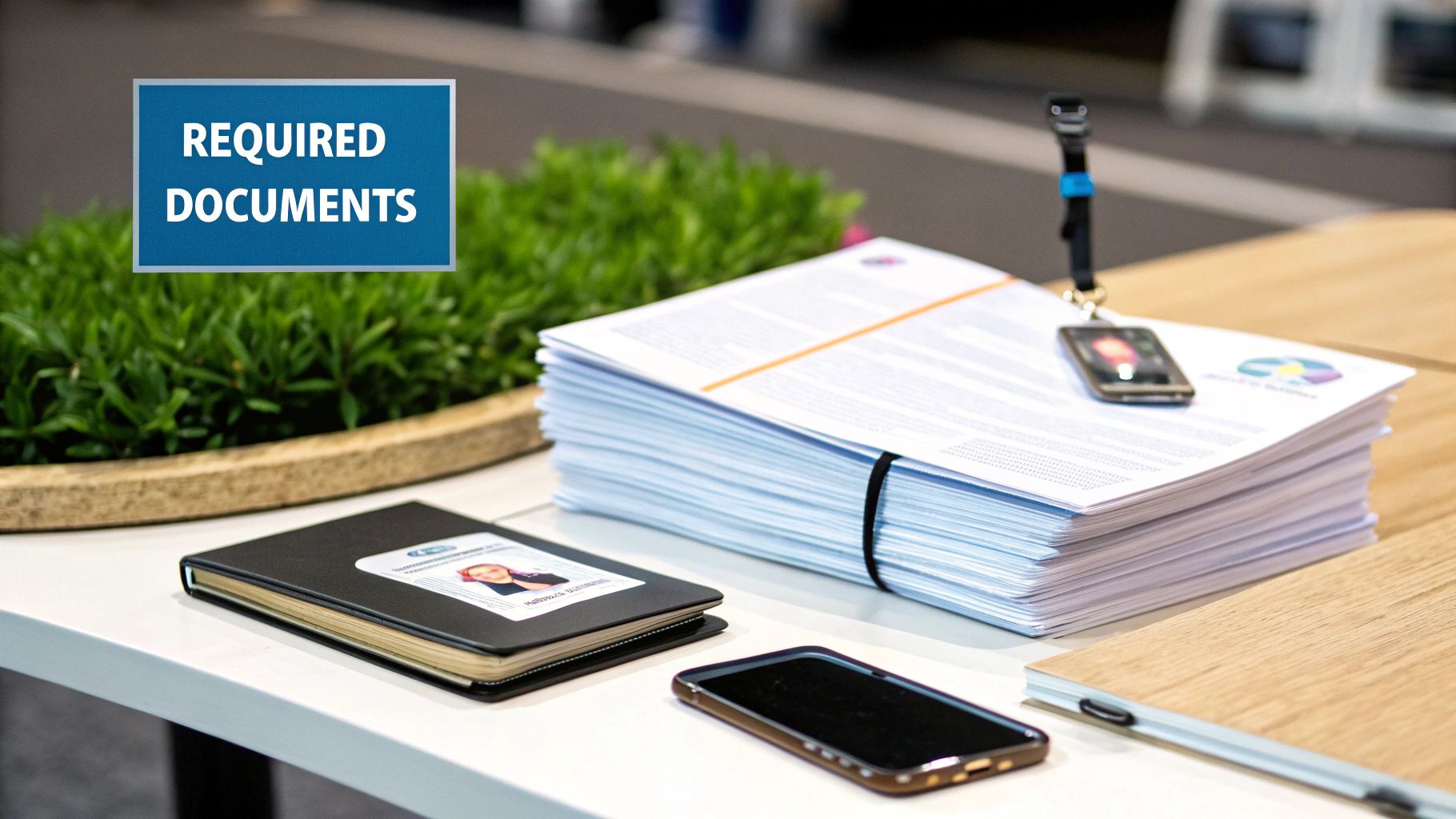
Once you've got all your pre-porting information handy, you're ready to get the ball rolling. The main event here is submitting what’s known in the industry as a Letter of Authority (LoA).
Don't let the formal name put you off. It’s simply the official permission slip that allows us to talk to your old provider and start the process of moving your number over. Our online porting form, shown above, acts as this LoA. We've designed it to be as straightforward as possible, guiding you through so there's no confusion.
Getting the details right on this form is the single best thing you can do to ensure the whole process is quick and painless.
Mobile vs. Landline Porting: What’s the Difference?
It’s worth knowing that the path to porting your number changes slightly depending on whether it's a mobile or a landline. They're both well-trodden paths here in the UK, but the mechanics are a little different.
-
Moving a Mobile Number: This is usually the quicker of the two. The key is the Porting Authorisation Code (PAC). You can get this simply by texting 'PAC' to 65075 from the mobile number you want to move. Your current provider is legally obliged to text it back within minutes, and it stays valid for 30 days. Just pop that code into our porting form when prompted.
-
Moving a Landline or VoIP Number: This journey doesn't involve a PAC. Instead, we rely on the account details you gathered earlier – things like your account number, the exact name on the account, and the service address. We use this information on the LoA to work directly with your current provider to arrange the switch.
The UK has a 'donor-led' porting model that’s been honed over decades. It's a robust system, overseen by Ofcom, where your existing provider (the 'donor') gives you the key (the PAC) to authorise the move. This ensures the entire transfer is secure and reliable for everyone.
This established system has made it incredibly dependable to port a telephone number in the UK. In fact, the practice was introduced way back in the late 1990s, making Britain one of the first countries to champion number portability. You can find more details on how centralised number databases improve this process and keep things running smoothly.
So, What Happens After You Submit Your Request?
Once you've sent your porting request our way, the behind-the-scenes work begins. This is where we step in and officially start talking to your old provider, acting as the go-between to get your number moved over smoothly. Our first job is a critical one: we meticulously check that every detail you gave us—like your account number, name, and address—is a perfect match with what your current provider has on file.
Think of this as the make-or-break moment when you port a telephone number. Even the tiniest mismatch, like a slight difference in your company name or address, can cause the request to be rejected. This is exactly why we put so much emphasis on getting the details right from the start. As soon as your old provider gives us the green light, we can lock in a firm date for the switch.
Understanding the Timelines
How long will it all take? That depends on the type of number you're bringing over. Mobile numbers, handled with a PAC code, are usually the quickest. You can often expect them to be switched over within one or two working days.
Landlines, Freephone numbers, and more complex VoIP systems naturally take a bit longer. The process for these can range from a few days to a couple of weeks, largely depending on the providers involved and the complexity of the setup.
We know waiting can be frustrating, so we promise to keep you in the loop. You’ll get regular email updates from our team at every key stage, so you're never left guessing where things stand.
To give you a clearer idea, here's a quick reference guide for typical porting durations for different types of UK telephone numbers. Just remember, these are based on working days and can sometimes vary.
| Estimated Number Porting Timelines in the UK |
| :— | :— |
| Number Type | Typical Porting Time (Working Days) |
| Mobile Number (with PAC) | 1-2 days |
| Geographic Landline (e.g., 01, 02) | 7-12 days |
| Non-Geographic (e.g., 03, 08) | 10-15 days |
| VoIP/Digital Line | 5-10 days |
As you can see, while some numbers take longer than others, the process is well-defined and predictable.
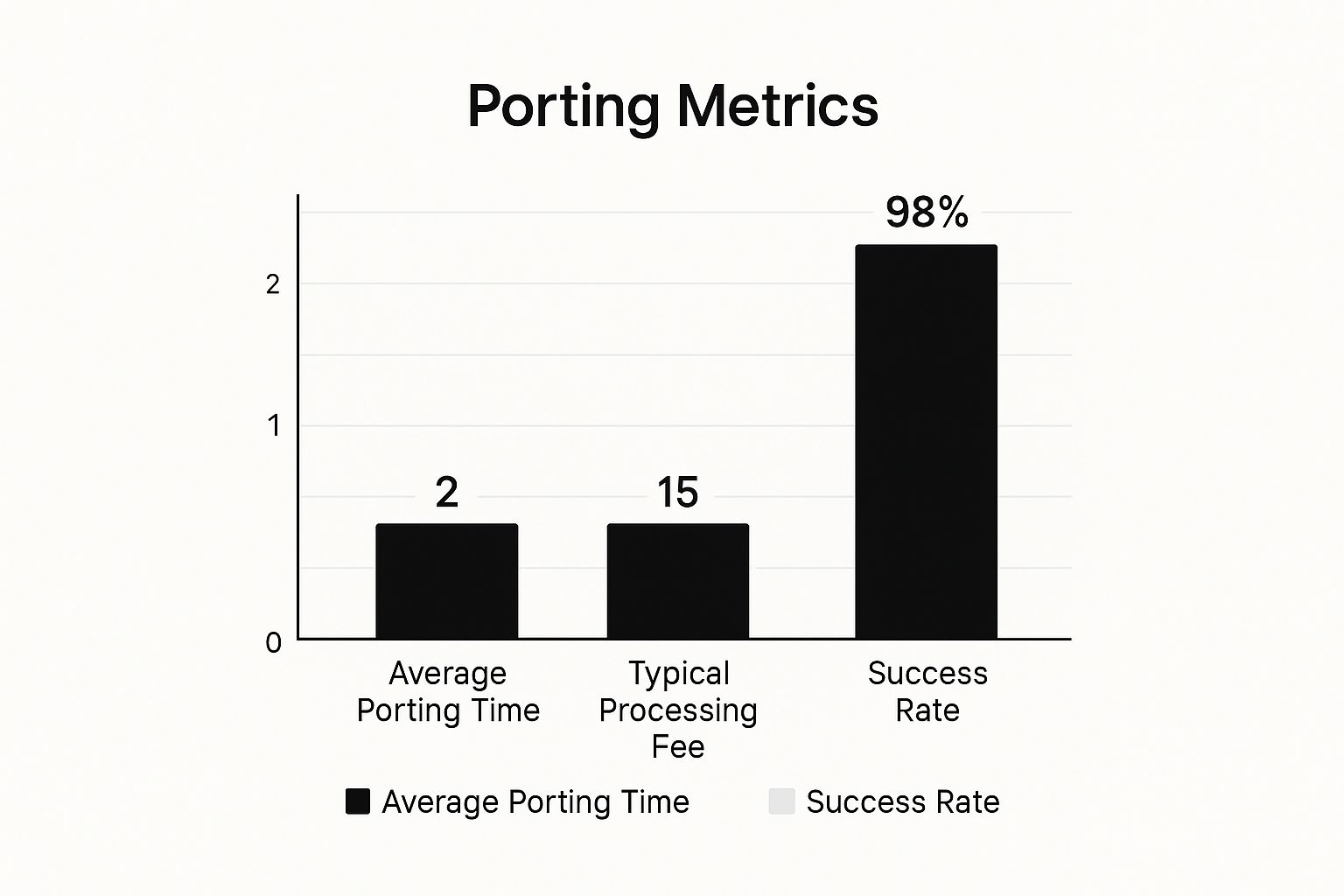
The great news is that the process is incredibly reliable, boasting a 98% success rate across the industry.
Preparing for Switchover Day
As the big day gets closer, a little prep work goes a long way to ensure a seamless transition without any disruption to your business. The single most important rule is not to cancel your old service too early! Wait until you get the official confirmation from us that the port is 100% complete.
Here are a few practical tips from our experience to help you get ready:
- Keep Your Team Informed: Give your staff a heads-up about when the switch will happen so they know what to expect.
- Get Your Devices Ready: Make sure you have the Business Numbers Direct service configured and ready to go on the phones or devices you'll be using.
- Avoid Making Changes: This is a big one. Don't make any changes to your account or plan with your old provider while the port is in progress, as it can derail the whole thing.
The Big Day: Confirming Your Number is Live
The porting date has arrived, and all the technical magic has happened behind the scenes. Keep an eye on your inbox for a final confirmation email from us – that’s the signal that your number is officially live and ready to go on the Business Numbers Direct network.
Once that email lands, we always recommend taking just a few minutes to double-check everything is running smoothly. It's a simple step, but it gives you complete peace of mind that your customers can reach you without a hitch.
A Quick 5-Minute Check-Up
Here’s a straightforward checklist to run through:
- Try calling out: Grab your phone and make a call from your newly ported number to another line, like your personal mobile. Does the call connect properly? And crucially, does your business number show up correctly on the caller ID?
- Get someone to call in: Ask a colleague to dial your business number. You want to make sure it rings on the device or system you've set up with us, just as you'd expect.
- Test your texts: If your plan includes SMS, send a quick message to a friend and have them reply. This confirms that two-way messaging is working as it should.
The single most important thing to remember is this: do not cancel your old service yet. Wait until you have our confirmation email and you’ve run these tests. Pulling the plug with your old provider too soon is the number one cause of service interruptions, and we want your switch to be seamless.
In the rare event that something doesn't work perfectly during your tests, our support team is ready to jump in and help. Just get in touch straight away.
Once you’ve confirmed everything is working, that’s the time to contact your old provider and officially close the account. This final step prevents any surprise bills and marks the end of a successful, smooth transition.
Common Questions About Number Porting
We've guided countless businesses through the process to port a telephone number, so we've heard just about every question there is. Here are answers to a few that pop up time and time again.
One of the biggest worries we hear is about service interruption. Will my phone line go dead during the switch? The short answer is no. The whole porting system is designed for a near-seamless transition. Your old service stays active right up until the moment your number is live with us, meaning any downtime is typically a matter of minutes, not hours.
Another frequent question is about porting a number that’s part of a broadband bundle. Yes, you absolutely can. You'll just need to give your current provider a heads-up beforehand to let them know you want to separate the phone line from the internet service. It's a standard procedure for them, so they'll know exactly what to do.
Can a Porting Request Be Cancelled?
What happens if you change your mind after submitting the request? In most cases, a porting request can be cancelled, but timing is crucial. You need to contact us well before the scheduled porting date for us to stop the process. Once the switch enters its final stages, it becomes much more difficult, and sometimes impossible, to reverse.
The best advice we can give is to be absolutely certain before you submit your Letter of Authority. A successful port relies on a firm commitment from everyone involved to see the process through.
Finally, people often ask if they can keep their number when moving to a different part of the country. With a virtual number provider like Business Numbers Direct, the answer is a resounding yes! Your number is no longer tied to a physical telephone exchange, giving you the freedom to operate from anywhere without ever having to change the number your customers know and trust.
Ready to take control of your business communications and separate work from personal life? Business Numbers Direct makes it simple to get a dedicated business number for WhatsApp in just minutes. Get your new business number today.

